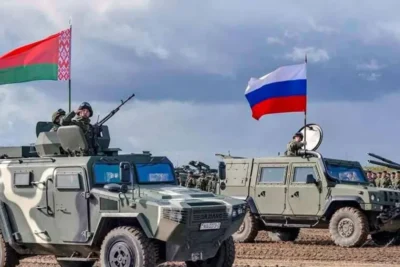
Who Are the Belarusian Partisans? 6 History Highlights from WWII Resistance to Digital Warriors

✊ Who Were the Belarusian Partisans?
- ✊ Who Were the Belarusian Partisans?
- 🕰️ The Roots: WWII and the Birth of the Belarusian Partisan Identity
- 🧬 Legacy and State Appropriation in the Soviet Era
- ⚠️ Lukashenko’s Belarus: Where Being a Partisan Is a Crime
- 💻 Digital Resistance: The Rise of the New Belarusian Partisans
- 🌍 Belarusian Partisans in Exile
- 🕯️ Memory, Myths, and the Power of Symbols
- 📢 Why It Matters Today
- 🔚 Conclusion
The term Belarusian partisans refers to the brave and defiant fighters who resisted Nazi occupation during World War II. Operating from the dense forests of Belarus, they launched sabotage missions, rescued prisoners, and disrupted enemy supply chains. Their legacy and history, however, did not end in 1945.
Today, a new generation of Belarusian partisans is rising — not with rifles, but with smartphones, encrypted apps, and courage. These modern fighters resist authoritarianism in a very different battlefield: the digital and political arenas of 21st-century Belarus.
In this article, we explore the historical origins of the Belarusian partisans, their evolution over the decades, and how they have reemerged as symbols of resistance against dictatorship.
🕰️ The Roots: WWII and the Birth of the Belarusian Partisan Identity
During the Second World War, Belarus — then a part of the Soviet Union — became one of the most brutal frontlines of the Nazi invasion. Over a quarter of its population perished. Entire villages were burned. In the face of this devastation, local resistance units formed in secret, often in forested areas, led by peasants, soldiers, and communists alike.
These Belarusian partisans carried out:
Railway sabotage: Destroying Nazi trains and tracks
Ambushes: Attacking convoys and patrols
Intelligence operations: Passing information to the Red Army
Rescue missions: Saving Jews, POWs, and civilians
By 1944, more than 374,000 partisans operated within Belarusian territory — one of the largest underground resistance networks in Europe.
Their motto? “Not a step back. Our land, our fight.”
🧬 Legacy and State Appropriation in the Soviet Era
After the war, the Soviet government glorified the partisan movement as a symbol of patriotic unity. Monuments were built, schoolbooks romanticized their actions, and films immortalized their bravery.
However, this came at a cost: the partisan identity was co-opted by the Soviet regime. It was cleansed of any dissenting voices, non-communist actors, or real political complexity. Over time, the true stories of Belarusian resistance became blurred — celebrated, yes, but also sterilized.
⚠️ Lukashenko’s Belarus: Where Being a Partisan Is a Crime
Fast forward to the 21st century. Under the authoritarian rule of Alexander Lukashenko, any form of resistance — even peaceful — is criminalized. Dissenters, journalists, and activists are labeled “extremists”, imprisoned, or forced into exile.
In this climate, the word “partisan” has taken on a new symbolic meaning:
🗨️ To be a Belarusian partisan today means to oppose dictatorship, seek truth, and resist state repression — often at great personal risk.
💻 Digital Resistance: The Rise of the New Belarusian Partisans
The 2020 Belarusian presidential election marked a turning point. Widespread fraud triggered massive protests, met with violent crackdowns. As traditional protest methods were crushed, tech-savvy activists went underground — both physically and digitally.
Modern Belarusian partisans include:
🛰️ Cyber-partisans: Hackers who infiltrated government systems, leaked police data, and exposed repression.
🎥 Citizen journalists: Armed with phones, documenting protests and brutality on the ground.
📢 Encrypted networks: Using Telegram and Signal to organize strikes, share information, and protect identities.
One prominent example is the “Cyber Partisans” group, which claimed responsibility for hacking state databases, disrupting railway systems used by Russian troops, and exposing officials’ corruption. They are partisan warriors of the 21st century, acting without violence but with maximum impact.

🌍 Belarusian Partisans in Exile
Due to Lukashenko’s brutal tactics, thousands of Belarusians have fled to Poland, Lithuania, Georgia, and beyond. But exile hasn’t stopped their resistance.
Some run independent media platforms reporting on Belarus from abroad.
Others build NGOs that support political prisoners.
Many participate in symbolic actions, like protests in European capitals, art installations, or hacking campaigns.
Even in exile, their partisan spirit remains intact: they are not victims, but fighters without a frontline.
🕯️ Memory, Myths, and the Power of Symbols
Why does the term “Belarusian partisans” still resonate so strongly?
Because it represents:
Defiance in the face of oppression
Hope in times of despair
A national identity forged through resistance
Whether in the woods of WWII or in today’s data networks, the partisan figure evokes the eternal struggle between the people and tyranny.
📢 Why It Matters Today
In 2025, as authoritarianism spreads across parts of the world, Belarus stands as a case study of modern resistance.
By remembering and redefining the belarusian partisans, we:
Honour the past while confronting the present
Resist the erasure of history by oppressive regimes
Empower future generations to stand up — whether with code, cameras, or courage
🔚 Conclusion
The story of the Belarusian partisans is far from over. What began in the forests has now moved into the digital sphere. Their tools have changed, but their mission is the same: freedom, justice, and dignity.
In the face of overwhelming control, the partisan spirit survives — and with every click, every leak, every voice raised, it grows stronger.
Because sometimes, resistance doesn’t wear camouflage. It wears courage.




